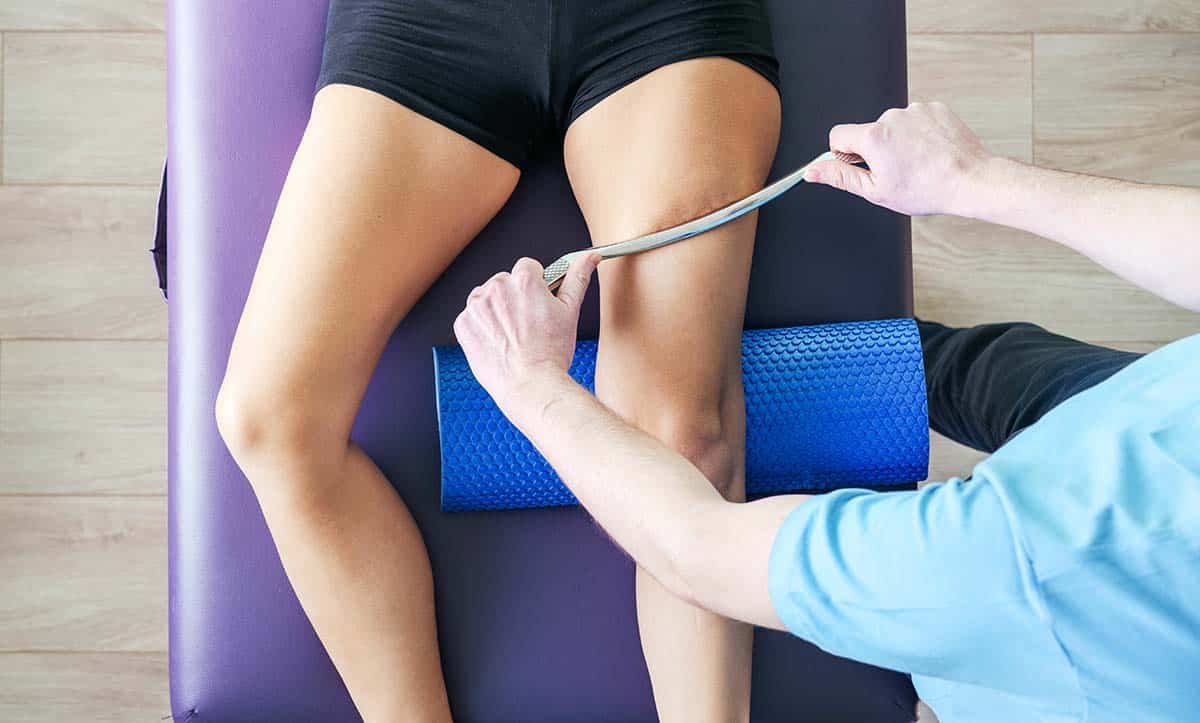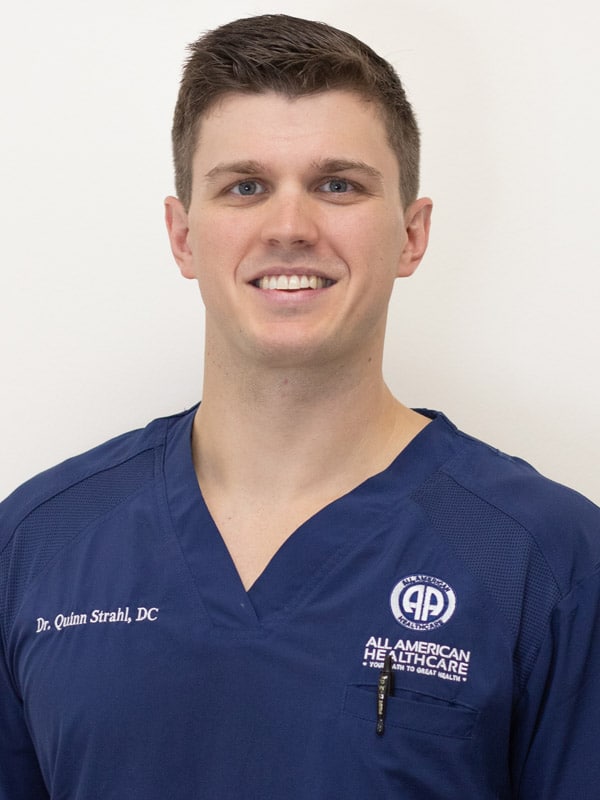The Graston Technique in Covington and Hammond
The Graston Technique is a chiropractic procedure that breaks down scar tissue and restrictions in the fascia (connective tissue) to relieve pain and restore motion.
This approach can increase the range of motion by an average of 35% after only 3-6 treatments.

What is the Graston Technique?
The Graston Technique is a form of instrument-assisted soft tissue mobilization used by therapists to treat musculoskeletal conditions. It uses stainless steel instruments designed to effectively detect and break down scar tissue adhesions and restrictions in soft tissues and fascia.
The instruments stroke over affected areas to promote blood flow, release built-up scar tissue, remobilize sticky tissues, and stimulate healing. Research shows the technique can help restore range of motion, decrease pain and disability, and promote faster rehabilitation for chronic overuse injuries by breaking down fibrotic tissues.1
Treatment sessions involve intermittently using instruments over affected tissue with stretching and strengthening exercises. Multiple treatments are often needed for maximal benefit.
Who should consider the Graston Technique for pain relief?
People who may benefit from Graston Technique treatments for pain include those with:
- Soft tissue injuries (strains, ligament sprains, tendonitis)
- Chronic pain conditions (e.g., myofascial pain syndrome)
- Sports injuries (overuse injuries)
- Limited range of motion
- Scar tissue management (post-surgery or injury)
- Postural issues
- Repetitive strain injuries
- Preventive care for soft tissue injuries
- People seeking non-invasive approaches to pain management
- Adhesions and fascial restrictions causing pain and discomfort
Why is the Graston Technique so effective for relieving pain?
The Graston Technique is considered effective for pain management primarily due to its targeted approach to addressing soft tissue issues, promoting mobility, and facilitating the body’s natural healing processes.
One of the unique aspects of the Graston Technique is that it is a non-invasive manual therapy. It does not involve drugs or surgical interventions, making it an appealing option for individuals seeking natural and responsible approaches to pain management.
How long does pain relief last when using the Graston Technique?
The duration of pain relief following the Graston Technique can vary widely depending on several factors, including the specific condition being treated, the severity of the issue, individual response to treatment, and adherence to post-treatment recommendations. Here are some general considerations:
Immediate relief from pain
Many individuals experience some level of immediate relief following a Graston Technique session. The manual therapy techniques used during the session can help release tension, improve mobility, and alleviate discomfort right away.
Cumulative benefits
The effects of the Graston Technique may accumulate over multiple sessions. With each treatment, practitioners aim to address underlying soft tissue issues and improve overall function. As a result, individuals may notice progressive and sustained pain relief over time.
Maintenance sessions
For chronic conditions or recurring issues, maintenance sessions may be recommended. Regular Graston Technique sessions can help manage symptoms and prevent the recurrence of pain. The frequency of maintenance sessions will be determined based on the individual’s needs and response to treatment.
Individual variability
The duration of pain relief varies from person to person. Factors such as overall health, lifestyle, and adherence to recommended exercises and self-care practices can influence the longevity of the benefits.
Combination with other therapies
The Graston Technique is often used as part of a comprehensive treatment plan. Combining it with other therapies, such as physical rehabilitation, stretching exercises, and lifestyle modifications, can contribute to longer-lasting pain relief.
Addressing underlying causes
To prolong the effects of the Graston Technique, it’s essential to address and manage any underlying factors contributing to the pain. This may include ergonomic changes, strengthening exercises, and lifestyle modifications.
It’s important to note that while the Graston Technique can provide effective pain relief, individual responses may vary.
Some individuals may experience sustained benefits for an extended period, while others may find it necessary to incorporate ongoing maintenance sessions to manage chronic conditions.
How the technique works at All American Medical
- One of our chiropractors applies Graston Technique instruments to the identified areas of soft tissue dysfunction. The instruments perform specific, controlled strokes along the skin’s surface.
- The chiropractor uses the instruments during the treatment to perform an instrument-assisted massage. The edges of the instruments help break down scar tissue and adhesions and mobilize fascial restrictions. The strokes are typically performed in the direction of the muscle fibers.
- The Graston Technique is often administered in a series of sessions, each building upon the progress made in the previous ones. The frequency and duration of treatment depend on the individual’s condition and response to therapy.
Covington Graston Technique Chiropractors
Dr. Curtis and Dr. Strahl lead our experienced Covington Graston Technique team.


Hammond Graston Technique Chiropractors
Dr. Dericks utilizes the Graston Technique in Hammond to reduce pain and improve range of motion.

How often are Graston treatments needed?
Most patients receive two treatments per week over four to five weeks. While each patient responds differently, many patients experience decreased pain by the third or fourth treatment.
Clinical research studies supporting The Graston Technique
(1) Miners, Andrew L and Tracy L. Bougie. “Chronic Achilles tendinopathy: a case study of treatment incorporating active and passive tissue warm-up, Graston Technique, ART, eccentric exercise, and cryotherapy.” The Journal of the Canadian Chiropractic Association 55 4 (2011): 269-79. https://pubmed.ncbi.nlm.nih.gov/22131563/
